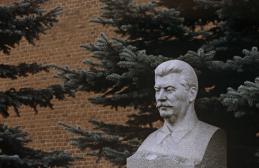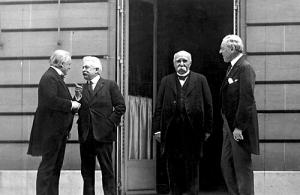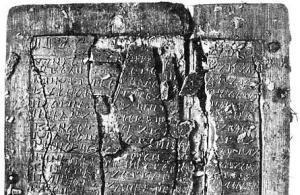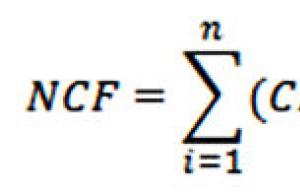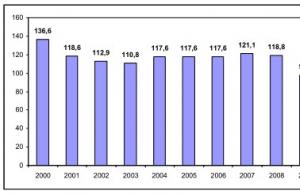Moscow- Москва
Moscow is the capital of the Russian Federation. Our capital is situated in the western part of our country on the Moscow-river, in the center of the West-European flatland. This region is a very heavily populated and highly developed area.
Москва - столица Российской Федерации. Наша столица располагается в западной части нашей страны на Москве-реке, в центре западно-европейской равнины. Этот регион является очень густо заселенным и высокоразвитым.
The Moscow region has a so called continental climate. Moscow winters are long and cold. Summers are usually mild and rather short. In summer months downpours often occur.
Московская область демонстрирует так называемый континентальный климат. Московские зимы долгие и холодные. Летом обычно тепло, и оно достаточно короткое. Летом часто могут идти ливневые дожди.
The population of Moscow is employed predominantly in industry, research and science. The most important Moscow industrial sectors are engineering and metalwork (automobile industry, manufacturing of precision instruments, bearings and machine tools). To important activities belong also textile industry, chemical industry, manufacturing of consumer goods, construction and publishing trade. Our capital is also the headquarters of banking and insurance organizations.
Население Москвы занято преимущественно в области производства, исследований и науки. Наиболее важными секторами московской промышленности являются машиностроение и металлообработка (автомобильная промышленность, производство высокоточных приборов, подшипников и машинного оборудования = станков). К важным отраслям относятся также текстильная промышленность, химическая индустрия, производство товаров народного потребления, строительство и издательское дело. Наша столица также является штаб-квартирой банковских учреждений и страховых компаний.
There are many different rings in the layout of the modern Moscow. The modern Garden Ring and the modern Boulevard Ring repeat the line of previous fortifications. The center of Moscow is encircled by the Little Ring Railway. The Moscow Ring Road encircles practically the outer perimeter of the capital.
На карте современной Москвы много различных колец. Современное Садовое кольцо и современное Бульварное кольцо повторяют линию прежних фортификационных сооружений. Центр Москвы охвачен Малым кольцом Московской железной дороги. Московская Кольцевая автомобильная дорога охватывает столицу практически по внешнему периметру.
The Kremlin is the historical heart of our capital. The Moscow Kremlin has twenty towers and redbrick walls. The Kremlin is the residence of the Russian government. At the east wall of the Moscow Kremlin is the Red Square. It is the central square of Moscow. The Lenin Mausoleum, the Cathedral of Saint Basil the Blessed, the State Historical Museum and the Main Department store of Moscow are situated around the Red Square.
Кремль является историческим сердцем нашей столицы. Московский кремль имеет двадцать башен и стены из красного кирпича. Кремль является резиденцией российского правительства. У западной стены Кремля находится Красная площадь. Это центральная площадь Москвы. Мавзолей Ленина, Собор Василия Блаженного, Государственный исторический музей и Главный универмаг Москвы расположены вокруг Красной площади.
In the center of Moscow are represented buildings constructed from the fifteenth century up to the present day. There are many examples of different architectonic styles in the central part of the capital located within the Moscow Garden Ring.
В центре Москвы представлены здания, сооруженные начиная с пятнадцатого столетия и по сегодняшний день. В центральной части столицы, расположенной внутри Московского Садового кольца, имеется много примеров различных архитектурных стилей.
Beyond the Moscow Garden Ring are located railway stations, various factories, freight terminals and accommodation buildings. There are many large apartment buildings in the city. Moscow has a number of industrial satellite towns and big dormitory suburbs.
За пределами Московского Садового кольца расположены железнодорожные станции, разнообразные заводы и фабрики, складские терминалы и жилые здания. В городе имеется большое количество крупных многоквартирных домов. Москва имеет ряд промышленных городов-спутников и крупные пригородные жилые кварталы.
There are many educational institutions, libraries, museums, galleries, theatres and other cultural objects in Moscow. The Moscow State University, The State Academic Great Theatre (Bolshoy), the State Pushkin Museum and the State Tretyakov Gallery are world-famous global names.
В Москве много образовательных учреждений, библиотек, музеев, галерей, театров и других культурных объектов. Московский Государственный университет, Государственный Большой академический театр, Государственный Пушкинский музей и Государственная Третьяковская галерея - это названия, известные во всем мире.
Moscow has a well-developed traffic infrastructure and public system of transportation including busses, trolleybuses, streetcars, fixed-route taxis and subway. Moscow is the center of national railway network. Moscow is also a big river port and a center of the national airline network.
Москва имеет высокоразвитую транспортную инфраструктуру и систему общественного транспорта, включающую автобусы, троллейбусы, трамваи, маршрутные такси и метро. Москва является центром сети национальных железных дорог. Москва также представляет собой крупный речной порт и центр внутренних авиалиний.
Другие темы
Moscow (4)
1). Moscow is the capital of Russia. 2). It is the largest city in our country and one of the largest cities in the world. 3). More than 8 million people live there. 4). Besides, every day about one million people come to Moscow from all over Russia and other countries. 5). Moscow was founded more than 800 years ago by Yuri Dolgoruki. 6). Our capital is situated on the banks of the Moscow River. 7). It is a main political, economic-al and cultural centre of our country. 8). Moscow is the seat of our Government. 9). Here numerous state and government offices are located. 10). The President of Russia lives and works in Moscow.
11). The heart of Moscow is Red Square. 12). Here you can see the most beautiful masterpieces of Russian architecture - the Kremlin and St. Basil"s Cathedral. 13). They attract lots of tourists. 14). Thousands of visitors enjoy the Tsar-Bell and the Tsar-Cannon, the Bell Tower of Ivan the Great, churches and museums of the Kremlin.
15). Moscow is the city of highly developed industry. 16). It has numerous modern enterprises, mostly engineering and metalworking plants. 17). They produce machine tools, motor cars, transformers, electric motors, TV sets, watches, etc. 18). Moscow is also a centre of the chemical industry.
19). Moscow is the port of five seas. 20). Four airports connect it with other parts of our country and many other countries. 21). There are nine railway stations in Moscow.
22). Moscow can be called a city of students. 23). There are a great number of schools, gymnasiums, lyceums, colleges, institutes and universities there.
24). Moscow is also an important cultural centre. 25). Worldwide-known theatres (the Bolshoi Theatre, the Maly Theatre, the Moscow Art Theatre, the Theatre in Taganka and many others), museums and art galleries (the Pushkin Museum of Fine Arts, the Tretyakov Gallery, etc.), exhibition halls are situated there.
26). Moscow is very beautiful. 27). Plenty of green parks, large squares and wide streets make Moscow very attractive.
Москва (4)
1). Москва - столица России. 2). Это самый большой город в нашей стране и один из самых больших городов в мире. 3). Более 8 миллионов человек живут там. 4). Кроме того, каждый день около миллиона человек приезжают в Москву со всей России и из других стран. 5). Москва была основана более 800 лет тому назад Юрием Долгоруким. 6). Наша столица расположена на берегах Москва-реки. 7). Это основной политический, экономический и культурный центр нашей страны. 8). Москва - резиденция нашего правительства. 9). Здесь расположены многочисленные государственные и правительственные учреждения. 10). Президент России живёт и работает в Москве.
11). Сердце Москвы - Красная площадь. 12). Здесь можно увидеть прекраснейшие шедевры российской архитектуры - Кремль и Собор Василия Блаженного. 13). Они привлекают множество туристов. 14). Тысячи посетителей любуются Царь-Колоколом и Царь-Пушкой, колокольней Ивана Великого, церквами и музеями Кремля.
15). Москва - город высокоразвитой промышленности. 16). В ней множество современных предприятий, в основном машиностроительных и металлообрабатывающих заводов. 17). Они выпускают станки, автомобили, трансформаторы, электродвигатели, телевизоры, часы и т. д. 18). Москва - также центр химической промышленности.
19). Москва - порт пяти морей. 20). Четыре аэропорта связывают её с другими частями нашей страны и другими странами. 21). В Москве девять железнодорожных вокзалов.
22). Москву можно назвать городом студентов. 23). Там великое множество школ, гимназий, лицеев, колледжей, институтов и университетов.
24). Москва - это также важный культурный центр. 25). Во всём мире известны театры (Большой Театр, Малый Театр, Московский Художественный театр, Театр на Таганке и многие другие), музеи и художественные галереи (Музей изобразительных искусств имени Пушкина, Третьяковская галерея и т. д.), выставочные залы, которые находятся здесь.
26). Москва очень красива. 27). Множество зелёных парков, больших площадей и широких улиц делают Москву очень привлекательной.
Dialogue:
- Have you ever been to Moscow?
- Yes, I have. It goes without saying, I was greatly impressed
by the city. But still I am very fond of St. Petersburg. I was
there some time ago. I believe it is one of the most beautiful
cities in the world.
- What is it famous for?
- Well, of course, it"s famous for its museums. In fact, it is a
museum in itself, which is situated on the banks of the Neva
river. I was impressed by lots of bridges. They say there are
more than 350 bridges in St. Petersburg.
- What monuments there attract tourists?
- First of all, the monument of Peter the First - the Bronze
Horseman is widely known. It is the monument to the founder of
the city.
- And when was the city founded?
- In 1703, by Peter the Great.
- What other places of interest are worth visiting?
- Well, first comes the Winter Palace, Palace Square, then there
are Peter-and-Paul Fortress, the Rostral Columns, Saint Isaac"s
Cathedral and many others.
Диалог:
- Вы когда-нибудь были в Москве?
- Да, был. Само собой разумеется, город произвёл на меня большое
впечатление. И всё же мне очень нравится Санкт-Петербург. Я был
там какое-то время назад. Я думаю, это один из самых красивых
городов в мире.
- Чем он знаменит?
- Ну, конечно же, своими музеями. По сути, он сам по себе музей,
который находится на берегах реки Невы. Меня поразило множество
мостов. Говорят, в Санкт-Петербурге более 350 мостов.
- Какие памятники там привлекают туристов?
- Во-первых, памятник Петру Первому - Медный всадник, широко
известен. Это памятник основателю города.
- А когда был город основан?
- В 1703 году, Петром Великим.
- Какие ещё достопримечательности стоит посетить?
- Во-первых, Зимний дворец, Дворцовую площадь, затем
Петропавловскую крепость, Ростральные колонны, Исаакиевский
собор и многие, многие другие.
Рассказ о Москве на английском языке может понадобиться не только в рамках учебной программы, эти знания пригодятся и в жизни.
При встрече с иностранцами желательно быть готовым рассказать о Москве. Причем, это необходимо не только тем, кто проживает непосредственно в Москве, но и живущим в других городах России.
Сначала необходимо определиться и составить небольшой план, что поможет подготовиться к рассказу о Москве.
Он может быть примерно таким:
- введение;
- общеизвестные факты и особенности географического положения;
- достопримечательности и места отдыха;
- интересные факты;
- заключение.
Если Москва – это родной город, то можно рассказ начинать именно с этого.
Moscow is my native city and I have been living here for more than 20 years. - Москва – мой родной город и я живу в нем более 20 лет .
Но если Москва не является родным городом, то можно начать несколькими способами:
- Со знаменитого высказывания или цитаты (Aristotle told us that a city is a unity of unlikes. - По словам Аристотеля, город – единство непохожих ).
- С интересного факта. Чтобы сделать рассказ более живым и интересным, лучше начать не с факта, что Москва является столицей РФ. Стоит придумать интересное предложение, которое заинтересует слушателя. Здесь можно кратко сказать о своем личном отношении к городу. (I have been to many cities, but Moscow will always be in my heart. - Я побывал во многих городах, но Москва останется в моем сердце навсегда. ).
Moscow is the capital of the Russian Federation and the administrative center of the Moscow region, it is also the largest Russian city with over 12 million residents. Moscow is located on the Moskva River in the European part of the country. Most historians agree that this river gave its name to the city. The Moscow Metro is considered to be one of the most beautiful underground systems in the world. Indeed, many of the stations have beautiful murals on the walls.
Москва – столица Российской Федерации и административный центр московской области. Также это крупнейший российский город, в нем официально проживает более 12 миллионов человек. Москва находится в европейской части страны, и расположена на реке Москва. Многие историки считают, что именно эта река дала имя городу. Московское метро является одним из красивейших метрополитенов мира. Действительно, многие его станции имеют на стенах красивые росписи.
Если рассказ о Москве является частью живого общения с иностранцами, то рекомендуется по возможности не только рассказать, но и показать основные достопримечательности города.
There is a great variety of landmarks in Moscow, some of them were included in the UNESCO World Heritage List. The most famous are: the Kremlin, Red Square, St. Basil"s Cathedral, the Armoury Chamber. If you’re planning to stay in Moscow for a while, don’t forget to pay a visit to the Pushkin State Museum of Fine Arts and The Tretyakov Gallery.
В Москве находится множество достопримечательностей, несколько из них вошли в список Всемирного наследия Юнеско. Самыми известными из них являются: Кремль, Красная площадь, Собор Василия Блаженного, Оружейная палата. Приезжая погостить в Москву, желательно посетить Пушкинский музей изобразительных искусств и Третьяковскую галерею.
Конечно, в рассказе также нужно уделить внимание местам, куда можно сходить просто отдохнуть, ведь Москва – это не только Кремль с Красной площадью, Третьяковской Галереей и другими знаменитыми достопримечательностями:
There are many theaters, monuments, parks, squares and theaters in Moscow. For example, there are more than 150 theaters that produce shows of various genres (the Taganka Theater, Lenkom Theatre, Sovremennik Theater). Moscow offers an exciting nightlife. A lot of the clubs open their doors for people who want to relax and dance all night.
В Москве находится огромное множество театров, памятников, парков, площадей и театров. Например, здесь более 150 театров, имеющие разнообразные направления и жанры: театр на Таганке, «Ленком», «Современник». В городе кипит и ночная жизни. Множество клубов открыты для людей, желающих весело отдохнуть и потанцевать ночью.
Стоит разбавить рассказ и интересными фактами.
Many people do not know that the length of all streets in this city put together is more than 4350 kilometers. There are a lot of hotels that offer rooms in various price categories. However, some of the hotels are considered to be the most expensive hotels in the world. Ostankino Tower is deemed to be the highest in Europe (540 meters), but it takes the 8th place in the world.
Не многие знают, что протяженность всех улиц города составляет более 4350 км. В Москве находится огромное количество отелей различной ценовой категории. однако именно здесь находятся самые дорогие отели мира. Останкинская телебашня считается самой высокой в Европе (540 м), но занимает 8-е место в мире.
Напоследок следует рассказать о самых любимых местах в городе или о забавных историях, которые могли иметь место на улицах Москвы.
Moscow (4)
1). Moscow is the capital of Russia. 2). It is the largest city in our country and one of the largest cities in the world. 3). More than 8 million people live there. 4). Besides, every day about one million people come to Moscow from all over Russia and other countries. 5). Moscow was founded more than 800 years ago by Yuri Dolgoruki. 6). Our capital is situated on the banks of the Moscow River. 7). It is a main political, economic-al and cultural centre of our country. 8). Moscow is the seat of our Government. 9). Here numerous state and government offices are located. 10). The President of Russia lives and works in Moscow.
11). The heart of Moscow is Red Square. 12). Here you can see the most beautiful masterpieces of Russian architecture - the Kremlin and St. Basil"s Cathedral. 13). They attract lots of tourists. 14). Thousands of visitors enjoy the Tsar-Bell and the Tsar-Cannon, the Bell Tower of Ivan the Great, churches and museums of the Kremlin.
15). Moscow is the city of highly developed industry. 16). It has numerous modern enterprises, mostly engineering and metalworking plants. 17). They produce machine tools, motor cars, transformers, electric motors, TV sets, watches, etc. 18). Moscow is also a centre of the chemical industry.
19). Moscow is the port of five seas. 20). Four airports connect it with other parts of our country and many other countries. 21). There are nine railway stations in Moscow.
22). Moscow can be called a city of students. 23). There are a great number of schools, gymnasiums, lyceums, colleges, institutes and universities there.
24). Moscow is also an important cultural centre. 25). Worldwide-known theatres (the Bolshoi Theatre, the Maly Theatre, the Moscow Art Theatre, the Theatre in Taganka and many others), museums and art galleries (the Pushkin Museum of Fine Arts, the Tretyakov Gallery, etc.), exhibition halls are situated there.
26). Moscow is very beautiful. 27). Plenty of green parks, large squares and wide streets make Moscow very attractive.
Москва (4)
1). Москва - столица России. 2). Это самый большой город в нашей стране и один из самых больших городов в мире. 3). Более 8 миллионов человек живут там. 4). Кроме того, каждый день около миллиона человек приезжают в Москву со всей России и из других стран. 5). Москва была основана более 800 лет тому назад Юрием Долгоруким. 6). Наша столица расположена на берегах Москва-реки. 7). Это основной политический, экономический и культурный центр нашей страны. 8). Москва - резиденция нашего правительства. 9). Здесь расположены многочисленные государственные и правительственные учреждения. 10). Президент России живёт и работает в Москве.
11). Сердце Москвы - Красная площадь. 12). Здесь можно увидеть прекраснейшие шедевры российской архитектуры - Кремль и Собор Василия Блаженного. 13). Они привлекают множество туристов. 14). Тысячи посетителей любуются Царь-Колоколом и Царь-Пушкой, колокольней Ивана Великого, церквами и музеями Кремля.
15). Москва - город высокоразвитой промышленности. 16). В ней множество современных предприятий, в основном машиностроительных и металлообрабатывающих заводов. 17). Они выпускают станки, автомобили, трансформаторы, электродвигатели, телевизоры, часы и т. д. 18). Москва - также центр химической промышленности.
19). Москва - порт пяти морей. 20). Четыре аэропорта связывают её с другими частями нашей страны и другими странами. 21). В Москве девять железнодорожных вокзалов.
22). Москву можно назвать городом студентов. 23). Там великое множество школ, гимназий, лицеев, колледжей, институтов и университетов.
24). Москва - это также важный культурный центр. 25). Во всём мире известны театры (Большой Театр, Малый Театр, Московский Художественный театр, Театр на Таганке и многие другие), музеи и художественные галереи (Музей изобразительных искусств имени Пушкина, Третьяковская галерея и т. д.), выставочные залы, которые находятся здесь.
26). Москва очень красива. 27). Множество зелёных парков, больших площадей и широких улиц делают Москву очень привлекательной.
Dialogue:
- Have you ever been to Moscow?
- Yes, I have. It goes without saying, I was greatly impressed
by the city. But still I am very fond of St. Petersburg. I was
there some time ago. I believe it is one of the most beautiful
cities in the world.
- What is it famous for?
- Well, of course, it"s famous for its museums. In fact, it is a
museum in itself, which is situated on the banks of the Neva
river. I was impressed by lots of bridges. They say there are
more than 350 bridges in St. Petersburg.
- What monuments there attract tourists?
- First of all, the monument of Peter the First - the Bronze
Horseman is widely known. It is the monument to the founder of
the city.
- And when was the city founded?
- In 1703, by Peter the Great.
- What other places of interest are worth visiting?
- Well, first comes the Winter Palace, Palace Square, then there
are Peter-and-Paul Fortress, the Rostral Columns, Saint Isaac"s
Cathedral and many others.
Диалог:
- Вы когда-нибудь были в Москве?
- Да, был. Само собой разумеется, город произвёл на меня большое
впечатление. И всё же мне очень нравится Санкт-Петербург. Я был
там какое-то время назад. Я думаю, это один из самых красивых
городов в мире.
- Чем он знаменит?
- Ну, конечно же, своими музеями. По сути, он сам по себе музей,
который находится на берегах реки Невы. Меня поразило множество
мостов. Говорят, в Санкт-Петербурге более 350 мостов.
- Какие памятники там привлекают туристов?
- Во-первых, памятник Петру Первому - Медный всадник, широко
известен. Это памятник основателю города.
- А когда был город основан?
- В 1703 году, Петром Великим.
- Какие ещё достопримечательности стоит посетить?
- Во-первых, Зимний дворец, Дворцовую площадь, затем
Петропавловскую крепость, Ростральные колонны, Исаакиевский
собор и многие, многие другие.
Топик Москва рассказывает о столице Российской Федерации. Это крупнейший по численности населения город России, он входит в первую десятку городов мира по численности населения. Москва - историческая столица Великого княжества Московского, Русского царства, Российской империи, Советской России и СССР. Город расположен на реке Москве в центре Восточно-Европейской равнины, в междуречье Оки и Волги. Москва издавна строилась с использованием радиально-лучевой планировки. Таким образом, город состоит из нескольких идущих от центра улиц и колец (3 транспортных - МКАД, Садовое, 3-е транспортное, а также Бульварное кольцо). Также начато строительство 4-го транспортного кольца. Москва - важный туристический центр России. Московский Кремль, Красная площадь, Новодевичий монастырь и Церковь Вознесения в Коломенском входят в список Всемирного наследия ЮНЕСКО. Москва является важнейшим транспортным узлом: город обслуживают 5 аэропортов, 9 железнодорожных вокзалов, 3 речных порта (имеется речное сообщение с морями бассейнов Атлантического и Северного Ледовитого океанов). Москва - крупнейший в общероссийском масштабе финансовый центр, международный деловой центр и центр управления большой частью экономики страны. В Москве находятся федеральные органы государственной власти Российской Федерации, посольства иностранных государств, штаб-квартиры большинства крупнейших российских коммерческих организаций и общественных объединений. В городе сосредоточены многие предприятия: машиностроение (производство легковых и грузовых автомобилей, шарикоподшипников, станков, точных приборов), металлообработка, а также производства текстильных изделий, химических веществ, продуктов питания и товаров народного потребления.
Moscow is the capital of Russia. The city is located in western Russia and lies in the broad, shallow valley of the Moskva River, a tributary of the Oka and thus of the Volga, in the centre of the vast plain of European Russia. This region is one of the most highly developed and densely populated areas of Russia.
The climate of Moscow is of the continental type, modified by the temperate influence of westerly winds from the Atlantic Ocean. Winters are cold and long, summers are short and mild. The moderate annual precipitation occurs predominantly in the summer months, often in brief, heavy downpours.
Only a small percentage of Moscow"s population is employed in the city centre because of the decentralization of workplaces. Industry is the dominant source of employment, followed by science and research. Although Moscow"s role in the country"s administration is of prime importance, government as a source of employment is relatively minor.
Engineering (production of automobiles and trucks, ball bearings, machine tools, and precision instruments) and metalworking are by far the most important industries. Other important activities include the manufacture of textiles, chemicals and derivative products, and consumer goods (foodstuffs, footwear, and pianos); timber processing; construction; and printing and publishing. Moscow is the headquarters of state insurance and banking organizations.
The pattern of rings and radials that marked the historical stages of Moscow"s growth remains evident in its modern layout. Successive epochs of development are traced by the Boulevard Ring and the Garden Ring (both following the line of former fortifications), the Moscow Little Ring Railway, and the Moscow Ring Road. From 1960 to the mid-1980s the Ring Road was the administrative limit of the city, but several areas of the largely greenbelt zone beyond the road have been annexed since then.
The centre of the city and the historical heart of Moscow is the fortified enclosure of the Kremlin. Its crenellated redbrick walls and 20 towers (19 with spires) were built at the end of the 15th century and were partially rebuilt in later years. Within the walls of the Kremlin are located the meeting places of the government of Russia. Among these are the former Senate building (1776-88), the Kremlin Great Palace (1838-49), and the modern Palace of Congresses (1960-61). Other features within the Kremlin include the central Cathedral Square, around which are grouped three cathedrals, all examples of Russian church architecture at its height in the late 15th and early 16th centuries; a group of palaces of various periods; the white bell tower of Ivan III the Great; the Armoury Museum; and the Arsenal (1702-36).
Along the east wall of the Kremlin lies Red Square, the ceremonial centre of the capital. The Lenin Mausoleum stands beneath the Kremlin walls, and the Church of the Intercession, or Cathedral of St. Basil the Blessed, is at the southern end of the square. The State Department Store, GUM, faces the Kremlin, and the State Historical Museum (1875-83) closes off the northern end of the square.
In the remainder of central Moscow, within the Garden Ring, are buildings representative of every period of Moscow"s development from the 15th century to the present. Examples of the Moscow Baroque style, the Classical period, and the revivalist Old Russian style may be found. In the Soviet period streets were widened, and much of the old part of the inner city was demolished and replaced by large office and apartment buildings, government ministries, headquarters of national and international bodies and organizations, hotels and larger shops, and principal cultural centres.
Beyond the Garden Ring is a middle zone dominated by 18th- and 19th-century developments; many factories, railway stations, and freight yards are located there. Since 1960 extensive urban renewal has occurred, producing neighbourhoods of high-rise apartment buildings. The outer zone has been the site of modern factory development and extensive housing construction in the 20th century. Beyond the newer suburbs are areas of open land and forest, together with satellite industrial towns and dormitory suburbs.
Moscow"s inhabitants are overwhelmingly of Russian nationality, but members of more than 100 other nationalities and ethnic groups also live there. Population density, though lowered by outward expansion of the city, has remained high because of the vast number of large apartment buildings.
Moscow has a large concentration of educational institutions, and its centres of higher education draw students from throughout Russia. Moscow State University (1755) is the leading educational institution. The city"s many specialized educational institutions include the Moscow Timiryazev Academy of Agriculture and the Moscow P.I. Tchaikovsky State Conservatory. Scientific research is conducted by the Academy of Sciences of Russia and many institutions linked to industry. The city"s libraries include the V.I. Lenin State Library.
Theatre, music, and art are important in the city"s life. The State Academic Bolshoi ("Great") Theatre (1825), Maly ("Little") Theatre, and Moscow Art Theatre are especially renowned. Of the many museums and galleries, the State Pushkin Museum of Fine Arts and the State Tretyakov Gallery are notable.
The Metro system, which reflects the city"s street patterns, is known for the elaborate architecture of its stations. Moscow is the centre of the country"s rail network, on which freight transport is heavily dependent. Trunk rail lines radiate from the city in all directions to major Russian population and industrial centres, to Ukraine, Belarus, and eastern Europe, and to Central Asia. Suburban commuter traffic is facilitated by the Moscow Little Ring Railway (1908) and the Greater Moscow Ring Railway, which link radial lines. Passenger trains connect to destinations throughout Russia and Europe. Moscow is also a major river port and is served by the Moscow Canal. The Volga"s various canals link Moscow to all the seas surrounding European Russia. Moscow is the centre of the country"s airline network; the Sheremetyevo airport, in the north, handles international flights.

